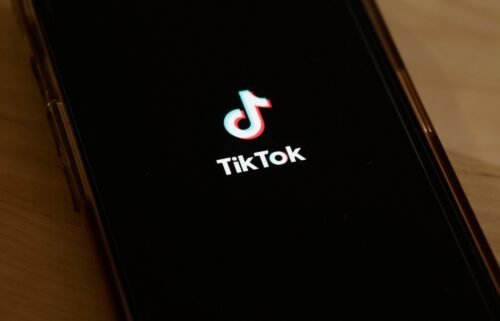The media is slashing jobs again as the Trump news cycle fades and the economy struggles

For years, the media industry has been forced to compete with tech platforms for advertising revenue and consumers’ time. Now, in addition to those same pressures, publishers will see increased competition for attention as the economy opens back up.
Last March, media owners reacted to the economic fallout of the pandemic with furloughs, layoffs and other cost-cutting measures. This March, as the world enters the next phase of the pandemic, four notable brands made major announcements that signified more instability in the industry.
First it was HuffPost, a 15-year-old publication that made deep cuts shortly after a major merger with BuzzFeed. Then Medium, a publishing platform known for frequent changes in its business strategy, pivoted once again and offered buyouts to all of its editorial staff. And then a lesser known but beloved men’s lifestyle digital outlet, MEL Magazine, was shut down by its owner, Unilever’s Dollar Shave Club. Vice Media also cut a handful of top jobs this week, positioning it as a restructuring rather than a cost-cutting move.
About 130 million people in the US and nearly 500 million globally have been vaccinated against Covid-19, which means some semblance of normalcy is on the horizon. But this, coupled with the fact that the Biden administration doesn’t drive a nonstop news cycle like its predecessor means that consumers are starting to spend less time on their screens. Some digital media companies also have been preparing to go public, providing an exit for longtime investors, but could be a reason for more job cuts.
“I think these media companies are looking at the dollar signs, and it’s just not there,” said Joel Kaplan, an associate dean for professional graduate studies and professor of magazine, newspaper and digital journalism at Syracuse University. “They have probably six months before it really gets bad. Once people are vaccinated and go back to doing the things that they’re used to doing, I think it’s going to fall off the cliff again.”
‘A point of no return’
HuffPost was losing more money than BuzzFeed CEO Jonah Peretti, its cofounder and now new owner, could stomach.
When Peretti announced on March 9 that 47 US HuffPost employees were losing their jobs and HuffPost Canada and Québec were shutting down, he revealed HuffPost’s losses had exceeded $20 million last year and estimated it would be similar this year without intervention.
“The most responsible thing we can do is to manage our costs and ensure BuzzFeed — and HuffPost — are set up to prosper long-term.” Peretti said. “That’s why we’ve made the difficult decision to restructure HuffPost to reach profitability more quickly. Our goal is for HuffPost to break even this year.”
Layoffs are common with acquisitions, said Austin Rief, cofounder of Morning Brew. His media company, which produces a daily business newsletter among other products, was recently acquired by Insider, formerly Business Insider, and has not faced cuts. “It was an accelerant for us,” Rief told CNN Business. But this is rare.
“It’s really unfortunate, but it also can’t be shocking,” Rief said. “Part of M&A is trying to extract synergies. Oftentimes companies get acquired because they’re not going that well and there are key pieces [the buyer wants]. But they don’t want everything.”
HuffPost’s March layoffs wasn’t the first time the publication had been downsized. As part of layoffs across its previous parent company Verizon Media Group, HuffPost let go of 20 employees in January 2019.
That month was brutal for digital media. About 2,100 media jobs were lost, Emily Bell, the founding director of the Tow Center for Digital Journalism at Columbia’s Graduate School of Journalism, wrote for The Guardian in February 2019. BuzzFeed at the time laid off more than 200 employees.
The detrimental effects the tech platforms, primarily Facebook and Google, had on influencing publishers’ reach and ad businesses were materializing.
“The amount of data large platform companies collect and control enables them to offer far more efficient advertising than any publisher, and the business of making online content profitable is rigged against anyone who wants to run even a sparsely resourced newsroom with experienced reporters,” Bell wrote in that 2019 Guardian piece.
Laura Bassett was a part of HuffPost’s 2019 layoffs and cofounded the Save Journalism Project shortly thereafter to call attention to the Big Tech’s “monopolistic” power.
“We’re reaching a point of no return,” Bassett told CNN Business in reference to the recent wave of layoffs. “There needs to a bigger, louder conversation and more public support behind holding Google and Facebook accountable and figuring out how to prop up journalism as an essential public service.”
Non-ad businesses
Medium used to rely on advertising revenue. But in 2017, CEO Ev Williams transitioned the company away from that to instead go all in on digital subscriptions. It was one of Medium’s many pivots and one that resulted in a third of its staff losing their jobs.
MEL, which coincidentally published on Medium before moving to its own site, also did not rely on ad dollars to sustain its business. For the majority of its six-year history, the outlet was supported by its parent company, Dollar Shave Club, and did not need to make its own revenue. Michael Dubin, the founder and former CEO of Dollar Shave Club who stepped down earlier this year, told Fast Company in 2018 that he viewed MEL as a way to “develop a deeper connection with its customer base, or member base in our case.”
But in March, MEL launched three paid newsletters to attract subscribers.
“It is an understandable search for a new sustainable business model given the domination of advertising by Google and Facebook,” Bassett said. “Journalism as an industry is facing a huge financial crisis.”
But the owners of Medium and MEL, separately, did not see a financially secure future in their current journalism enterprises — or at least for MEL, Dollar Shave Club just did not want to be a part of it.
“Unfortunately, we have had to make the difficult decision to move forward without them so we can better focus on our consumer business,” a Dollar Shave Club spokesperson said in a statement. “We wish them all the best and are doing everything we can to support them through this transition. We are hopeful for the publication’s next chapter.”
That news, which MEL broke through its official Twitter account, sparked an outpouring of support online. MEL didn’t mimic other men’s magazines. It provided an honest, approachable take on masculinity, offering up weird and amusing headlines such as “Why Vape Bros Love Vaping While Pooping” to “Survivalist TV Is Now Our Pandemic ASMR.”
The New York Times tech reporter Taylor Lorenz tweeted she was “heartbroken for the staff who produced some of the most groundbreaking, incredible digital culture coverage.” The Daily Beast media reporter Max Tani tweeted, “Mel felt like a throwback to an older blogging era when people still seemed to get enjoyment out of posting.”
Medium made a name for itself with its original reporting and investigations and the occasional viral post from famous figures such as Barack Obama and Jeff Bezos. Since Medium’s pivot to subscriptions, the platform has attracted more than 700,000 paid subscribers which resulted in more than $35 million in revenue, Casey Newton reported.
“But it represents a weak outcome for Williams, who previously sold Blogger to Google and co-founded Twitter, which eventually went public and today has a market capitalization of more than $50 billion,” Newton wrote.
As Williams wrote on Tuesday, Medium is “redirecting editorial resources” to focus on supporting independent writers rather than writers he directly employs. “They’re leaning into being a platform versus being a publisher,” Rief said. “There’s so much good user-generated content.”
Competing with user-generated content is top of mind for Rief and his team at Morning Brew.
“You’re competing with basically every human on the planet,” Rief said. “Everyone can create content. Publishers have to figure out what makes you unique. Why are people going to open up a Morning Brew newsletter versus just go on Instagram or go on Twitter?”
The next chapter
Digital media companies are exploring their next chapter after years of raising round after round of venture capital.
In January, CNBC reported that Bustle Digital Group, Group Nine, Vox Media, Vice Media and BuzzFeed have talked about going public through special-purpose acquisition companies, or SPACs, this year. Group Nine, which operates a portfolio of sites including NowThis and The Dodo, launched a SPAC that month, though it does not yet include its own sites. Bryan Goldberg, CEO of Bustle Digital Group, told CNBC that he predicted consolidation among those five digital media companies.
It would make sense that to prepare for any SPAC deals, these media companies would cut costs through layoffs to improve their balance sheets. Layoffs are typical with consolidation, too.
Kaplan said he sees media industry as facing an “inexorable decline” that was partially offset — for some outlets — for a year when people were more reliant on news or simply bored at home during the pandemic.
“In 2019, [the industry] was going in that direction, down, down, down. Really, it got a year reprieve,” Kaplan said. “You can’t run against the curve. You can’t push against the tsunami that’s coming toward you.”



